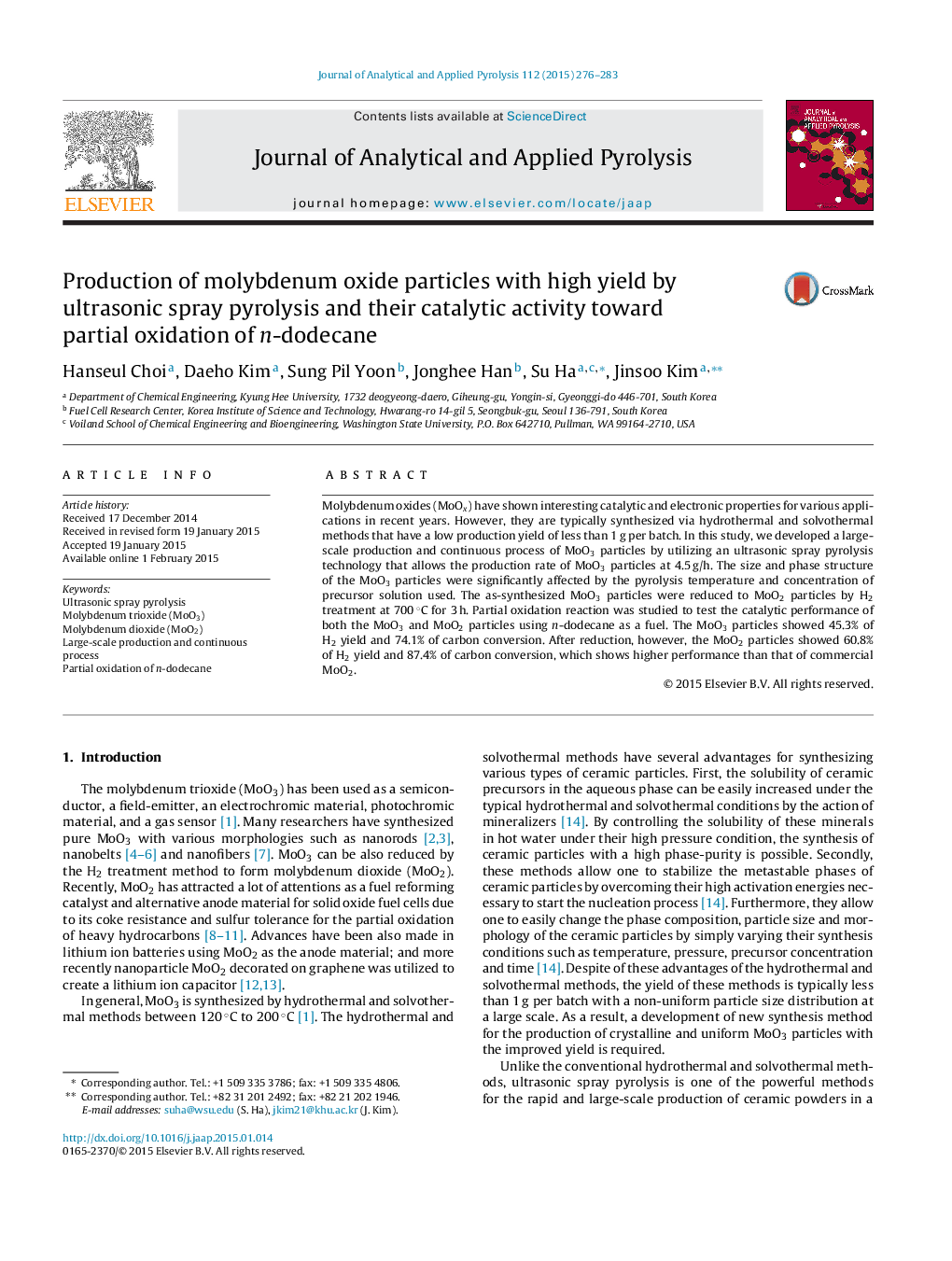| کد مقاله | کد نشریه | سال انتشار | مقاله انگلیسی | نسخه تمام متن |
|---|---|---|---|---|
| 1197243 | 1492965 | 2015 | 8 صفحه PDF | دانلود رایگان |

• An ultrasonic spray pyrolysis used to continuously produce MoO3 at a rate of 4.5 g/h.
• Both size and phase of MoO3 were significantly affected by pyrolysis temperatures.
• Both size and phase of MoO3 were significantly affected by precursor concentrations.
• MoO2 showed 61% H2 yield and 87% C conversion for partial oxidation of n-dodecane.
Molybdenum oxides (MoOx) have shown interesting catalytic and electronic properties for various applications in recent years. However, they are typically synthesized via hydrothermal and solvothermal methods that have a low production yield of less than 1 g per batch. In this study, we developed a large-scale production and continuous process of MoO3 particles by utilizing an ultrasonic spray pyrolysis technology that allows the production rate of MoO3 particles at 4.5 g/h. The size and phase structure of the MoO3 particles were significantly affected by the pyrolysis temperature and concentration of precursor solution used. The as-synthesized MoO3 particles were reduced to MoO2 particles by H2 treatment at 700 °C for 3 h. Partial oxidation reaction was studied to test the catalytic performance of both the MoO3 and MoO2 particles using n-dodecane as a fuel. The MoO3 particles showed 45.3% of H2 yield and 74.1% of carbon conversion. After reduction, however, the MoO2 particles showed 60.8% of H2 yield and 87.4% of carbon conversion, which shows higher performance than that of commercial MoO2.
Journal: Journal of Analytical and Applied Pyrolysis - Volume 112, March 2015, Pages 276–283